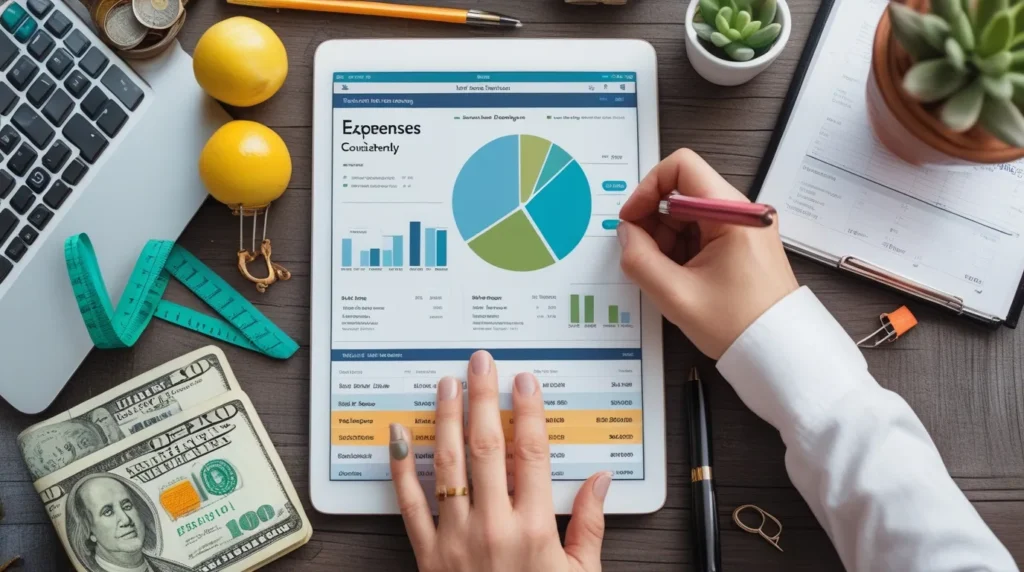Best Ways to Track Expenses Consistently
Managing finances can feel overwhelming, especially when expenses pile up unexpectedly. One of the most effective ways to gain financial clarity is by tracking your expenses consistently. Expense tracking not only helps you understand your spending habits but also allows you to identify areas to save, invest, and plan for future goals. By creating a system that works for you, you can develop financial discipline, reduce unnecessary spending, and make smarter money decisions.
Consistency is key. Tracking expenses sporadically only gives a partial picture, but when done regularly, it empowers you to take control of your financial health. From simple manual methods to advanced digital tools, there are multiple strategies to help you stay on top of your finances without feeling stressed or overwhelmed.
Step 1: Set a Clear Budget
Before tracking your expenses, it’s important to know your financial limits.
- Define monthly income and fixed expenses: Start by listing all income sources and recurring bills like rent, utilities, and subscriptions.
- Allocate for savings and investments: Decide on a percentage of income to save or invest before budgeting for discretionary spending.
- Identify spending categories: Divide your budget into categories such as groceries, entertainment, transportation, and dining out.
Having a clear budget provides a reference point and makes it easier to measure where your money is going.
Step 2: Choose a Tracking Method
There are multiple ways to track expenses, so pick one that fits your lifestyle:
- Manual tracking: Keep a dedicated notebook or ledger to record every expense daily. This method is simple and helps you stay mindful.
- Spreadsheet tracking: Tools like Excel or Google Sheets allow you to categorize and calculate expenses automatically.
- Expense tracking apps: Apps like Mint, YNAB, or PocketGuard can sync with your bank accounts and categorize transactions automatically.
Consistency matters more than complexity. Choose a method you can maintain daily or weekly.
Step 3: Record Every Expense
Tracking works best when nothing is skipped.
- Track small purchases: Even minor expenses like coffee or snacks add up and can reveal spending patterns.
- Update immediately: Record transactions as they happen to prevent forgetting.
- Include cash and digital payments: Don’t just rely on bank statements; track cash spending as well.
This practice increases awareness of where your money goes and prevents unnoticed leaks in your budget.
Step 4: Review and Categorize
Once you record your expenses, review them regularly:
- Weekly or monthly check-ins: Analyze patterns and compare spending with your budget.
- Identify trends: Notice areas where you overspend or consistently underspend.
- Adjust categories: Modify your budget based on real-life spending to make it realistic.
Regular review ensures you remain in control and helps prevent financial stress.
Step 5: Use Technology for Efficiency
Technology can simplify expense tracking and provide valuable insights:
- Banking apps: Many banks now provide expense summaries automatically.
- Budgeting tools: Apps can send alerts when you exceed category limits.
- Financial dashboards: Visualization tools like pie charts and graphs make tracking more intuitive.
The right tech tools can save time, reduce errors, and make tracking consistent and less tedious.
Step 6: Make It a Habit
Consistency is the most important factor in tracking expenses effectively:
- Set reminders: Schedule daily or weekly times to log expenses.
- Combine with other routines: Link expense tracking with activities like checking emails or paying bills.
- Reward yourself: Celebrate milestones to maintain motivation.
The more habitual the process becomes, the easier it is to stay financially aware and make informed decisions.
Final Thoughts
Tracking expenses consistently is the cornerstone of financial freedom. By monitoring every transaction, reviewing spending patterns, and leveraging tools and habits that work for you, you gain clarity and control over your finances. The journey doesn’t have to be complicated—small, consistent steps lead to better financial health over time.
Whether your goal is to save for a big purchase, reduce debt, or simply understand your spending habits, a disciplined expense-tracking system ensures you stay on track. Empower yourself with knowledge, embrace consistency, and watch your financial confidence grow.

